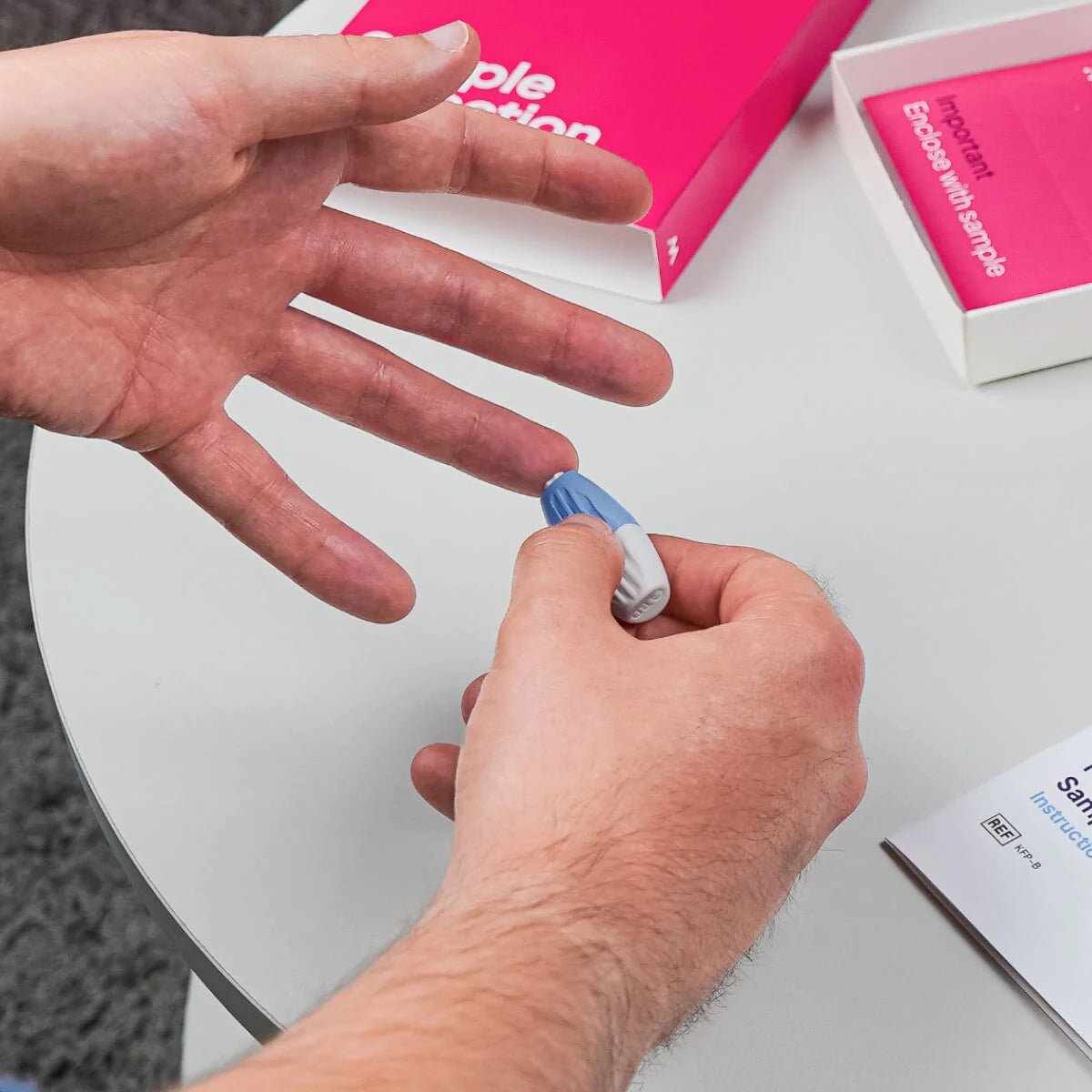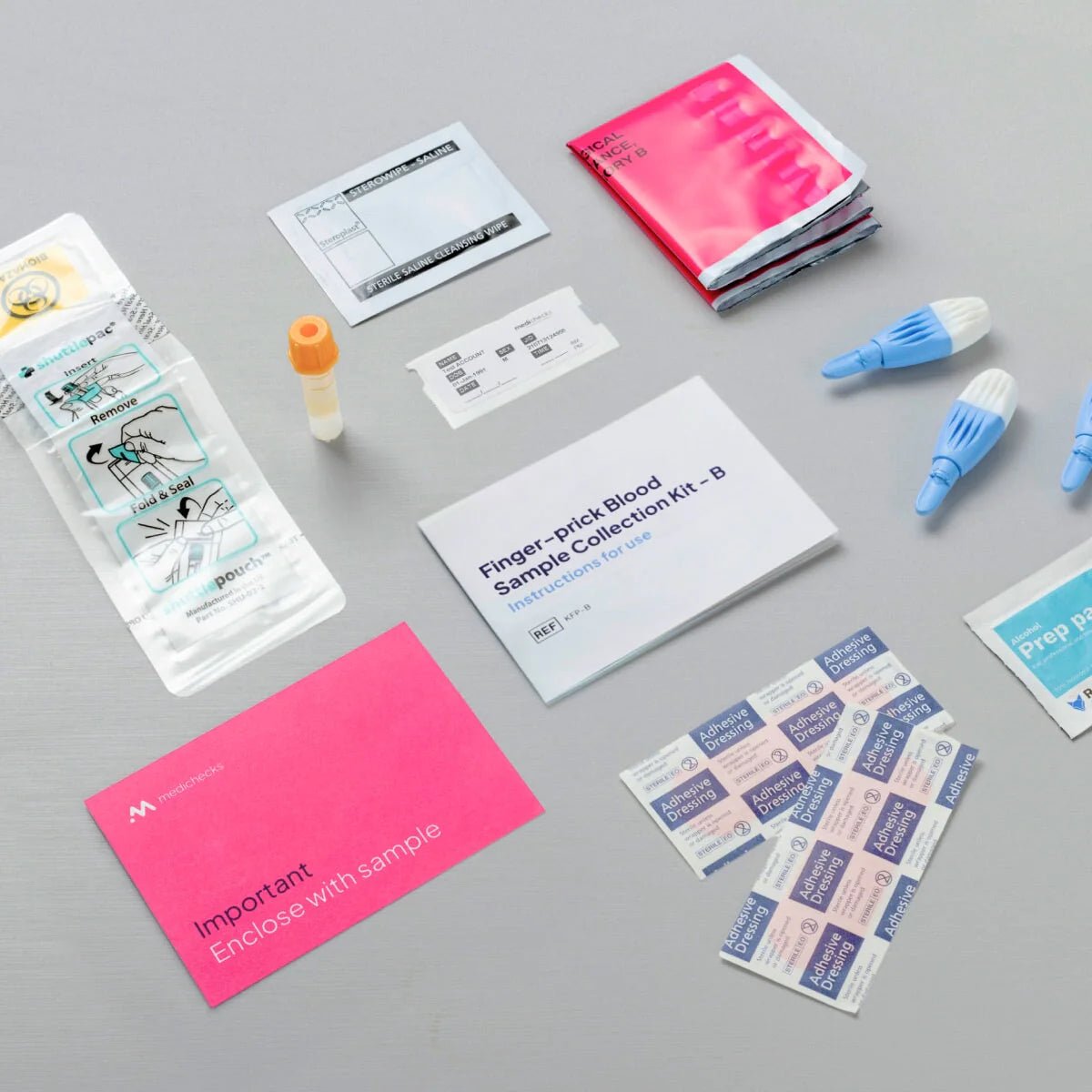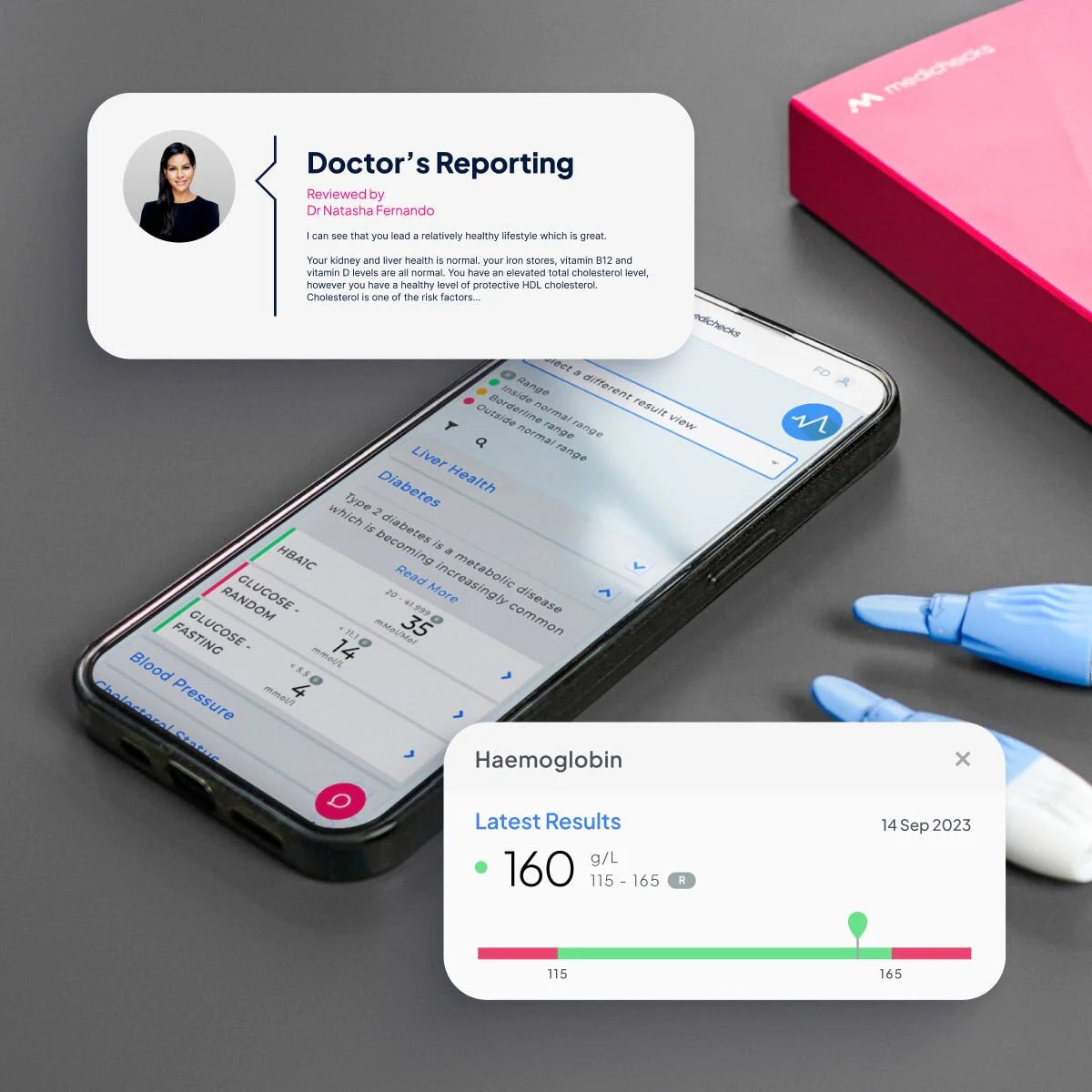Get a detailed understanding of your levels of omega-3 and omega-6 — two essential fatty acids that help keep your brain healthy, strengthen your immune system, and help maintain a healthy balance of fats in your body. This home blood test includes your omega-6 to omega-3 ratio and the Omega-3 Index. It provides insights into how your diet could be affecting your health, including your risk of heart disease.
Is it for me?
Do you want to learn more about how your diet could be affecting your health, including your risk of heart disease? Perhaps you want to find out if your intake of omega-3 fatty acids is adequate to support your general health, especially if you’re pregnant or have a plant-based diet.
Our omega-3 and -6 test looks at your ratio of omega-6 fatty acid, ARA, to the omega-3 fatty acid, EPA (ARA:EPA), and your Omega-3 Index — this gives you detailed insights into your levels of essential fatty acids and indicates whether you could further optimise your diet.
Omega-3 and -6 Blood Test, from our experts to you.
What do omega-3 and omega-6essential fatty acids do?
Essential fatty acids are vital for the normal functioning of your body systems, including supporting your immune system, regulating blood pressure, and keeping your brain healthy. They’re known as polyunsaturated fats and can help lower the level of bad cholesterol in your blood.
Omega-3 fatty acids are considered particularly healthy fats — they can help to reduce inflammation and protect your body against heart disease. There’s lots of research supporting the benefits of two particular omega-3 fatty acids — eicosapentaenoic acid (EPA) and docosahexaenoic acid (DHA) — in supporting heart, brain, joint, and eye health.
Omega-6s are also good for you, in moderation. However, they’re thought to be pro-inflammatory. Although inflammation helps protect your body from injury and infection, it can cause damage and disease when it becomes chronic (long-term) and excessive. A healthy balance of omega-3s and omega-6s has the potential to keep this type of inflammation in check.
What's a good omega-6 to omega-3 ratio and Omega-3 Index?
Our test looks at your ratio of the omega-6 fatty acid, arachidonic acid (ARA), to the omega-3 fatty acid, eicosapentaenoic acid (EPA). There's no consensus on an optimal omega-6 to omega-3 ratio. Generally, it's best to aim for a result that’s as low as possible. The Omega-3 Index is more well-defined, with a result of 8% or above putting you in a lower-risk category.
Western diets are associated with higher levels of ARA compared to EPA. A higher ratio may increase the risk of inflammation and chronic health conditions, such as cardiovascular disease, type 2 diabetes, and other inflammatory and autoimmune diseases.
The good news is that making changes to your diet can help improve your levels and reduce these risks.
What foods are omega-3 and omega-6 found in?
There are many sources of omega-6 fatty acids including most vegetable oils, red meat, poultry, eggs, leafy green vegetables, and nuts. In contrast, omega-3s are found in a much smaller number of foods, such as oily fish, flaxseeds, and walnuts. The omega-3 fatty acids, EPA and DHA, which are measured in the Omega-3 Index, are mainly found in algae and oily fish such as salmon and mackerel.
As your body is unable to make omega-3 and omega-6 fatty acids by itself, they must be taken in directly through the food you eat. And, due to the smaller number of dietary sources, many people don’t get enough omega-3 fatty acids, which makes testing your levels so important.
What's Included?
Omega fatty acids
ARA : EPA
Omega-3 essential fatty acids such as EPA are responsible for controlling inflammation, brain development, and regulating blood pressure. Omega-6 fatty acids such as ARA are thought to have a pro-inflammatory role in the body, while omega-3 fatty acids like ERA are thought to have an anti-inflammatory role.
Omega 3 Index
The Omega-3 Index is the proportion of long-chain omega-3s, eicosapentaenoic acid (EPA) and docosahexaenoic acid (DHA) of all fatty acids in your blood, specifically your red blood cell membranes. Aiming for an Omega-3 Index >8% helps maintain optimum heart, brain, eye, and joint health.
How to prepare for your test
Prepare for your Omega 3 and 6 Blood Test by following these instructions. Do not eat or drink anything other than water for 12 hours prior to your test. If you take medication then you are allowed to take it as you would normally. Take your blood test before you take any omega 3 supplements.
FAQ
What Are The Benefits Of Omega-3 Fatty Acids?
Omega-3 has anti-inflammatory properties and may help to support the circulation and immune system. Increasing omega-3 intake has been associated with an improvement in certain signs and symptoms, such as:
-Fatigue and muscle weakness
-Poor attention and/or concentration
-Depression
-Dry eyes
-Dry skin, brittle hair, and thin nails
What Can I Do To Improve My Levels?
If the results of your omega blood test are outside of the healthy ranges, you may be able to make improvements with changes to your diet. This should include reducing the amount of omega-6-rich food you eat, while boosting your sources of omega-3s.
If you want to improve your Omega-3 Index, you’ll need to boost your intake of EPA and DHA. Oily fish, like salmon and mackerel, is one of the best sources. But if you don’t eat fish, you can increase your intake of algae like seaweed, nori, spirulina, and chlorella.
You may also be recommended to take a supplement, such as an omega-3-rich fish oil or algae supplement. If so, follow your doctor’s advice carefully.
Are All Omega-6 Fatty Acids Bad?
Research suggests that not all omega-6s cause inflammation and some may even be anti-inflammatory. Also, not all omega-3s may be equally as good for you as one another. Some sources of omega-6 are healthier than others, such as sesame and avocado oils, which contain lower levels of omega-6 than sunflower oil.
Can I Take An Omega-3 Test At Home?
Yes, you can do an omega check with our at-home omega-3 blood test. We’ll send you everything you need including our omega-3 test kit and a pre-paid return envelope for your sample.
How Can I Test For Omega-3 At Home?
Our essential fatty acids test includes a full lab analysis of your sample. You can view the results of your omega test on your MyMedichecks dashboard, with doctor’s advice on any next steps.
The Omega-3 Index test explained
There’s growing evidence that too much omega-6 is not the main problem with typical Western diets, but more so, the problem is too little of the beneficial omega-3 fatty acids, EPA and DHA.
The Omega-3 Index specifically measures the proportion of EPA and DHA in your blood — giving you an indication of your omega-3 status and your risk of heart disease.
Your result is given as a percentage, which indicates your heart disease risk as follows:
| Risk level | Omega-3 Index result |
| Low risk | >8% |
| Intermediate risk | 4-8% |
| High risk | <4% |
So, once you know your index result, you can take steps to optimise it with some simple dietary changes.
Essential fatty acids and plant-based diets
Plant-based sources of omega-3s are not thought to have the same benefits to your heart health as those found in fish. And so, it can be harder to get beneficial omega-3 fatty acids into your diet if it’s plant-based.
However, there are ways to boost your omega-3 intake on a plant-based diet, including eating omega-3-rich foods like hemp and flaxseeds.
Omega-3-rich algae supplements can help you improve your omega-3 status (algae is the source from which oily fish get omega-3). Find one that contains both the omega-3 fatty acids, EPA and DHA.
And you can also cut back on omega-6-rich foods like sunflower and sesame oils to improve your 6:3 ratio.
BE MORE JELLYFISH
The science of Longevity is growing at breakneck speed and tens of BILLIONS of dollars are being invested in solutions to help us all slow aging. But until 'Longevity Escape Velocity' has been achieved, we should all be more like Turritopsis Dohrnii jellyfish - which do not age - and we should invest in our long-term health with a healthy lifestyle, supported by longevity supplements.
WorldWide
Guarantee
Payment
Policy










